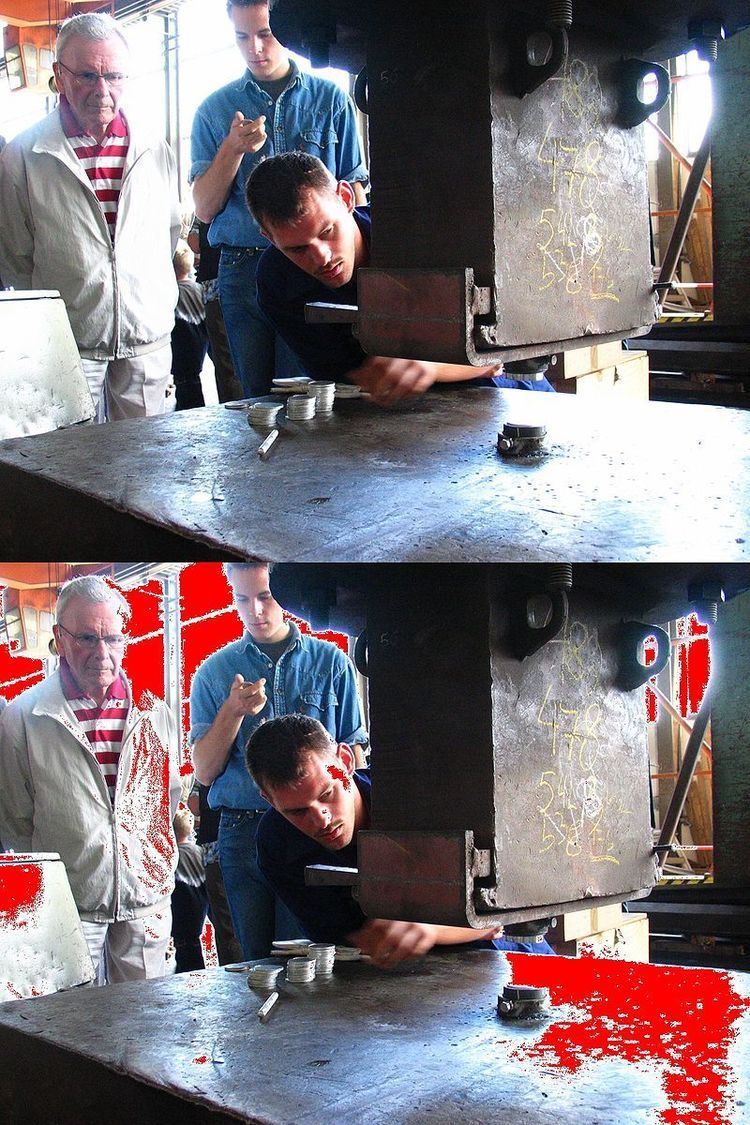 | ||
Image quality is a characteristic of an image that measures the perceived image degradation (typically, compared to an ideal or perfect image). Imaging systems may introduce some amounts of distortion or artifacts in the signal, so the quality assessment is an important problem.
Contents
In photographic imaging
An image is formed on the image plane of the camera and then measured electronically or chemically to produce the photograph. The image formation process may be described by the ideal pinhole camera model, where only light rays from the depicted scene that pass through the camera aperture can fall on the image plane. In reality, this ideal model is only an approximation of the image formation process, and image quality may be described in terms of how well the camera approximates the pinhole model.
An ideal model of how a camera measures light is that the resulting photograph should represent the amount of light that falls on each point at a certain point in time. This model is only an approximate description of the light measurement process of a camera, and image quality is also related to the deviation from this model.
In some cases, the image for which quality should be determined is primarily not the result of a photographic process in a camera, but the result of storing or transmitting the image. A typical example is a digital image that has been compressed, stored or transmitted, and then decompressed again. Unless a lossless compression method has been used, the resulting image is normally not identical to the original image and the deviation from the (ideal) original image is then a measure of quality. By considering a large set of images, and determining a quality measure for each of them, statistical methods can be used to determine an overall quality measure of the compression method.
In a typical digital camera, the resulting image quality depends on all three factors mentioned above: how much the image formation process of the camera deviates from the pinhole model, the quality of the image measurement process, and the coding artifacts that are introduced in the image produced by the camera, typically by the JPEG coding method.
By defining image quality in terms of a deviation from the ideal situation, quality measures become technical in the sense that they can be objectively determined in terms of deviations from the ideal models. Image quality can, however, also be related to the subjective perception of an image, e.g., a human looking at a photograph. Examples are how colors are represented in a black-and-white image, as well as in color images, or that the reduction of image quality from noise depends on how the noise correlates with the information the viewer seeks in the image rather than its overall strength. Another example of this type of quality measure is Johnson's criteria for determining the necessary quality of an image in order to detect targets in night vision systems.
Subjective measures of quality also relate to the fact that, although the camera's deviation from the ideal models of image formation and measurement in general is undesirable and corresponds to reduced objective image quality, these deviations can also be used for artistic effects in image production, corresponding to high subjective quality.
Image quality assessment categories
There are several techniques and metrics that can be measured objectively and automatically evaluated by a computer program. Therefore, they can be classified as full-reference (FR) methods and no-reference (NR) methods. In FR image quality assessment methods, the quality of a test image is evaluated by comparing it with a reference image that is assumed to have perfect quality. NR metrics try to assess the quality of an image without any reference to the original one.
For example, comparing an original image to the output of JPEG compression of that image is full-reference – it uses the original as reference. Most of the leading picture quality prediction models are variants of the Emmy-winning structural similarity (SSIM) model developed by the Laboratory for Image and Video Engineering (LIVE) at the University of Texas at Austin.
